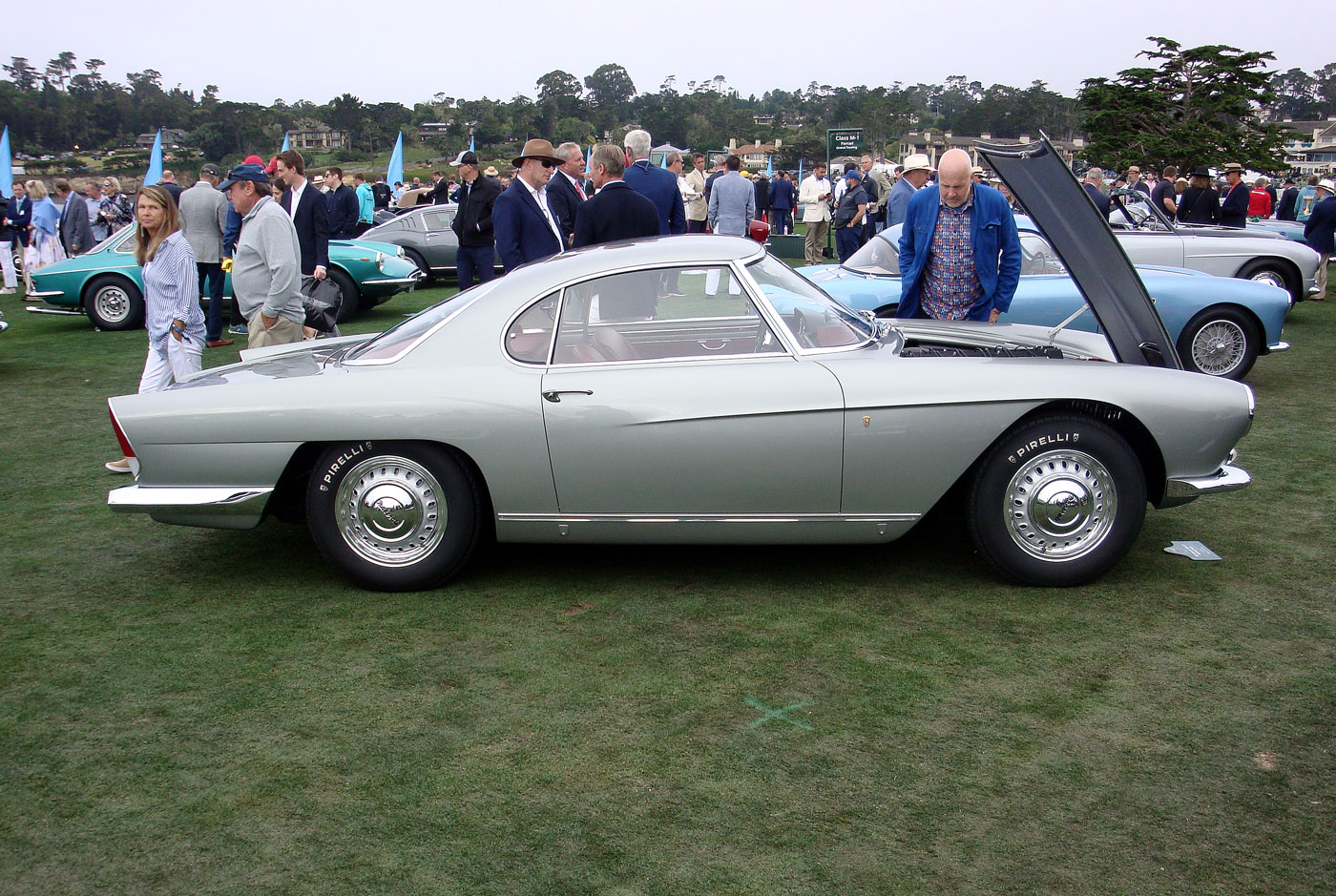
1959 Maserati 3500 GT Bertone coupe, owned by Jim Utaski, Skillman, NJ. I have never seen this before, even in a picture, another one-of-a kind example, quite striking.
Intro by Grant Black, Brisbane Australia
Walking along a narrow road by Carmel Bay, leading to the famous Pebble Beach golf course, two shadowy figures exchanged ‘Good Mornings’ in the misty pre-dawn light. This was my serendipitous meeting with your VeloceToday reporter, Brandes Elitch.
Australia has some wonderful events celebrating things motoring, among them the Phillip Island Classic, Mt Panorama Bathurst, Motorclassica, even the Cars’n’Coffee pop-up gatherings in my home town of Brisbane continually amaze with their eclectic roll up. However, my imagination was insufficiently ambitious to prepare me for this ‘Bucket List’ trip to see a slice of Monterey Car Week.
Seated on park bench at the edge of the 18th fairway, Brandes and I watched the creation of a precise mosaic using the world’s most exclusive automobiles as tesserae. Spectators arriving later, marvel at the display unaware they forego the joy of the dawn patrol attendees who see and hear these rarities fired up and driven to their carefully allotted positions on the lush grass. Surely a greenkeeper’s nightmare.
Elitch continues his fabulous report below, but sadly dear readers, you missed his impromptu, often hilarious half-day one-on-one tour, reeling off detailed facts about every other car (and person) on display.
Pebble Beach Concours materializes Brigadoon-like on the Pacific coast for one day each August. If you ever have the opportunity, take the early morning walk down this misty road. Perhaps you too, will run into Brandes Elitch!
Story and photos by Brandes Elitch
The Pebble Beach Concours is great theatre. And like Broadway, you need a great storyline, great characters, great sets, and a collaborative effort between the actors, director, playwright, and production staff. It’s all the elements working together that makes for a great production and great theatre.
In the first column, we explored two of the featured categories, Figoni and Pegaso. Those were my favorites. Now let’s take a look at some of the other featured categories.
By now you have possibly read comments that there has been a shift from prewar to postwar cars at the show. This year, the event celebrated significant anniversaries of Lamborghini and McLaren. There was in fact a full class of McLarens. The program features a wonderful article, “The Legacy of Bruce McLaren, Celebrating 60 Years” by Leigh Dorrington. There were eleven cars on display, from the 1965 M1A race car, two CanAm race cars, an Indy car, and three Formula 1 race cars.
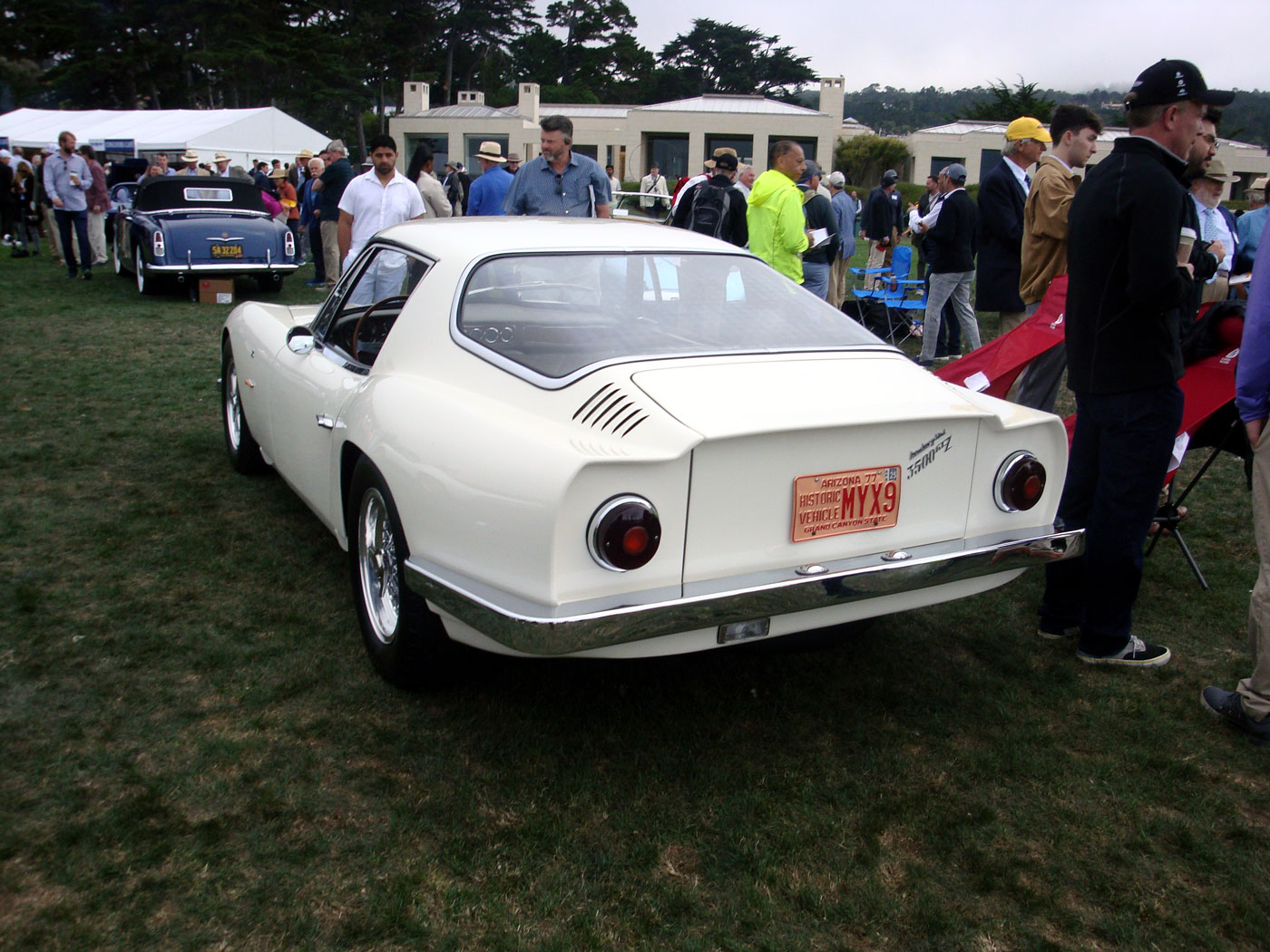
This is a 1965 Lamborghini 3500 GT Zagato coupe, owned by Bill Pope, Scottsdale, AZ, undoubtedly a one-of-a-kind, the kind of thing you come to this show to see.
The Lamborghini 60th Anniversary display counted 8 cars, including a 1965 3500 GTZ Zagato coupe, a 1966 400 GT Interim Touring coupe, an Islero, two Miuras, an Espada (my favorite), and the obligatory Countach and Diablo. The program had a special article “Lamborghini, The Man & The Marque” by Aaron Robinson. I must add here that the program is, as always, a very special treat and something to keep and treasure. The same goes for the poster, which people have collected for decades, including me. Before I forget, you can order the program and the poster at this site:
I must warn you that when you see the posters, you will be tempted!
https://theconcoursstore.com/collections
A fabulous class was “Vanderbilt Cup Era Race Cars,” seven cars, with the most famous being the actual 1906 Vanderbilt Cup “Old 16” Locomobile, from the Henry Ford Museum. The program has an article on this by George Wingard, who is unquestionably the authority on vintage racecars pre-war, both wars, including owning a 1911 Mercer 35R, two Ballot racecars, a 1913 Isotta Tipo IM, and others too numerous to mention. Mr. Wingard has a PhD in archaeology and anthropology. He has shown cars here before, and even raced them at Indy, has been a judge here, and at one point even held an FIA license for racing antique racecars! It is an honor to have him write for the program.
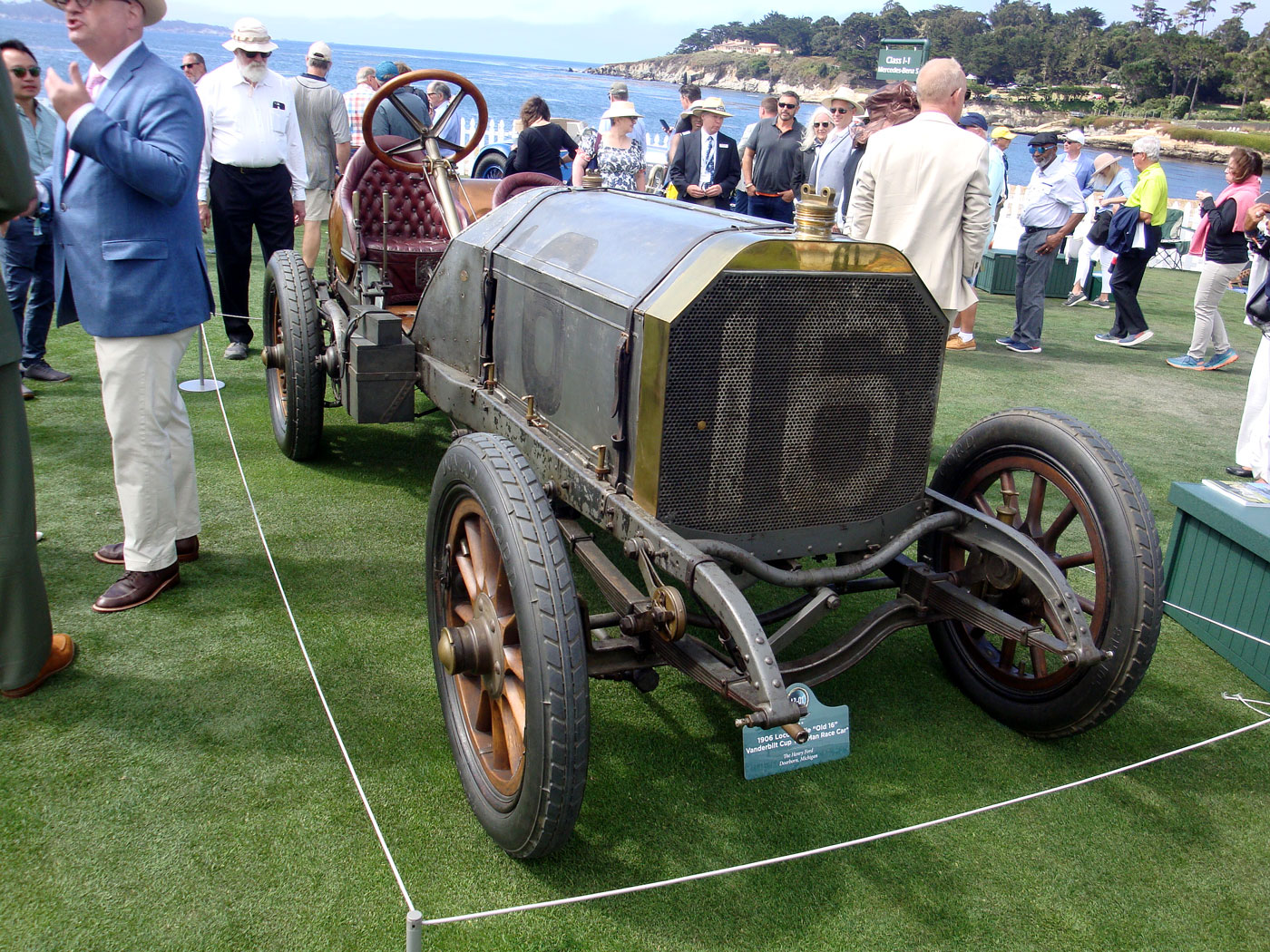
Here is the famous Locomobile “Old 16” as immortalized by Peter Helck, currently owned by the Henry Ford Museum in Dearborn, MI.
I particularly liked the Postwar Luxury class, and this included an article in the program by Leslie Kendall, “Automotive Luxury in the Postwar Era.” Mr. Kendall is another important author, and is Chief Historian at the Petersen Automobile Museum, prior to that one of the team that created the museum in the first place.
There were two classes for Mercedes: one for the 1927-1929 S model, and another class for the 1929-1931 SS and SSK models.
A somewhat unusual class, the first time to my knowledge, was American Dream Cars of the 1950’s, with ten cars on display. To me the star was the 1954 Edwards America convertible of Gary and Cathy Edwards, of Spring Branch, TX. I suspect we will see more of this class in the future.
To state the obvious, you could spend an hour just looking at all the cars in just one class. But unlike a shall we say “typical” show, where you look at perhaps every fifth car, here you must look at every single one. That is the difference. And since there are about 215 cars on the field, you have to move with a purpose to see them all.
It would be a fool’s errand to pick out those to be featured here. Nonetheless, here are some more images which I took of cars which particularly interested me. One of them was my favorite, but you will have to get to the bottom to find out.
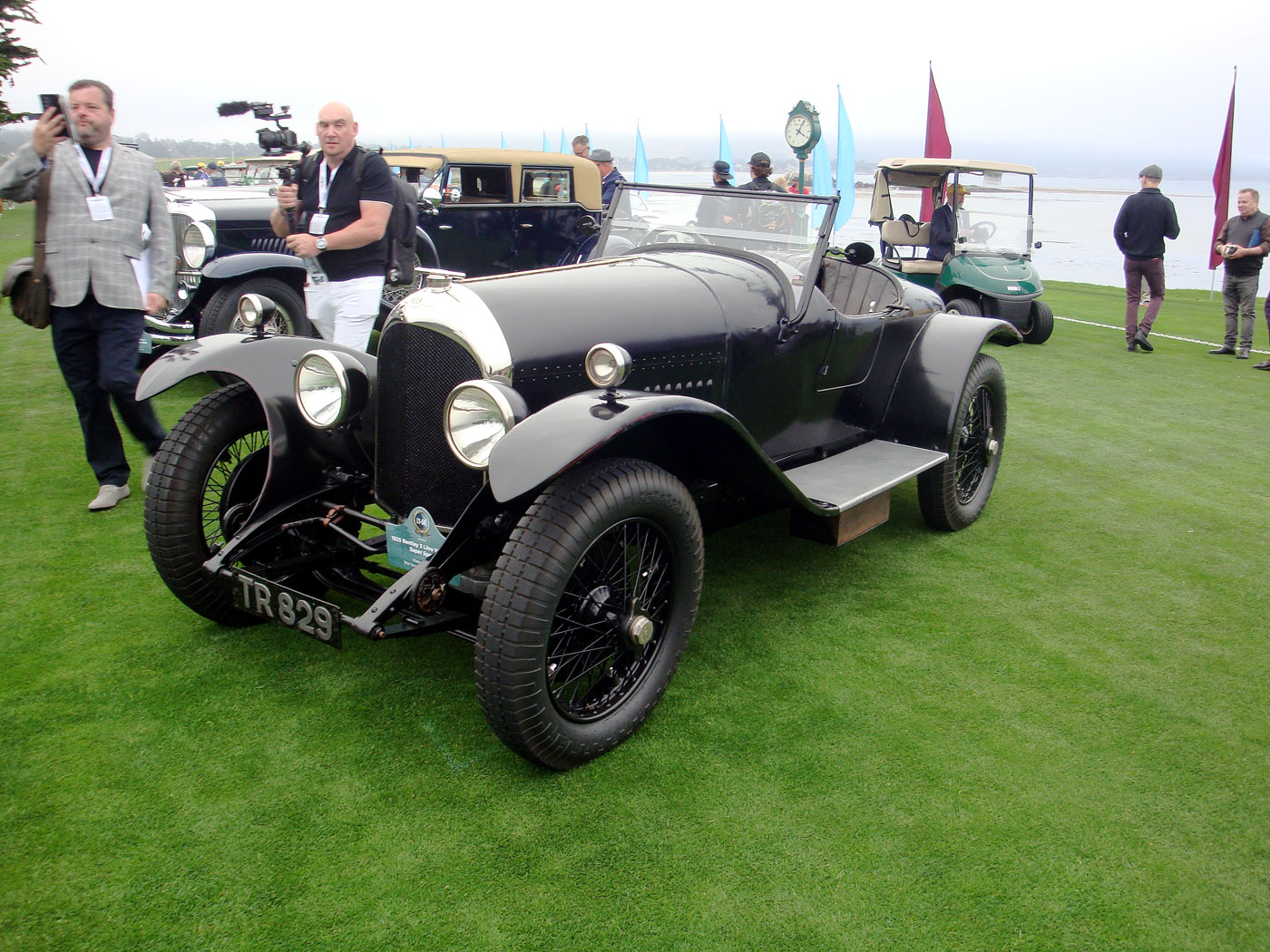
1925 Bentley 3 litre 100 MPH Super Sports, from Vintage Bentley, West Sussex, UK. First of all, I love the “preservation” class, an attempt to treasure and celebrate those few remaining unrestored cars and get away from what some might feel is an emphasis on “over-restoration,” as practiced by Harrah and Nethercutt in the early days of the show. Second, this has to be one of the absolutely most desirable pre-war Bentleys of any year or model. As you remember, a works Bentley won Le Mans 5 times in the twenties, before retiring after the 1930 event. Fabulous.
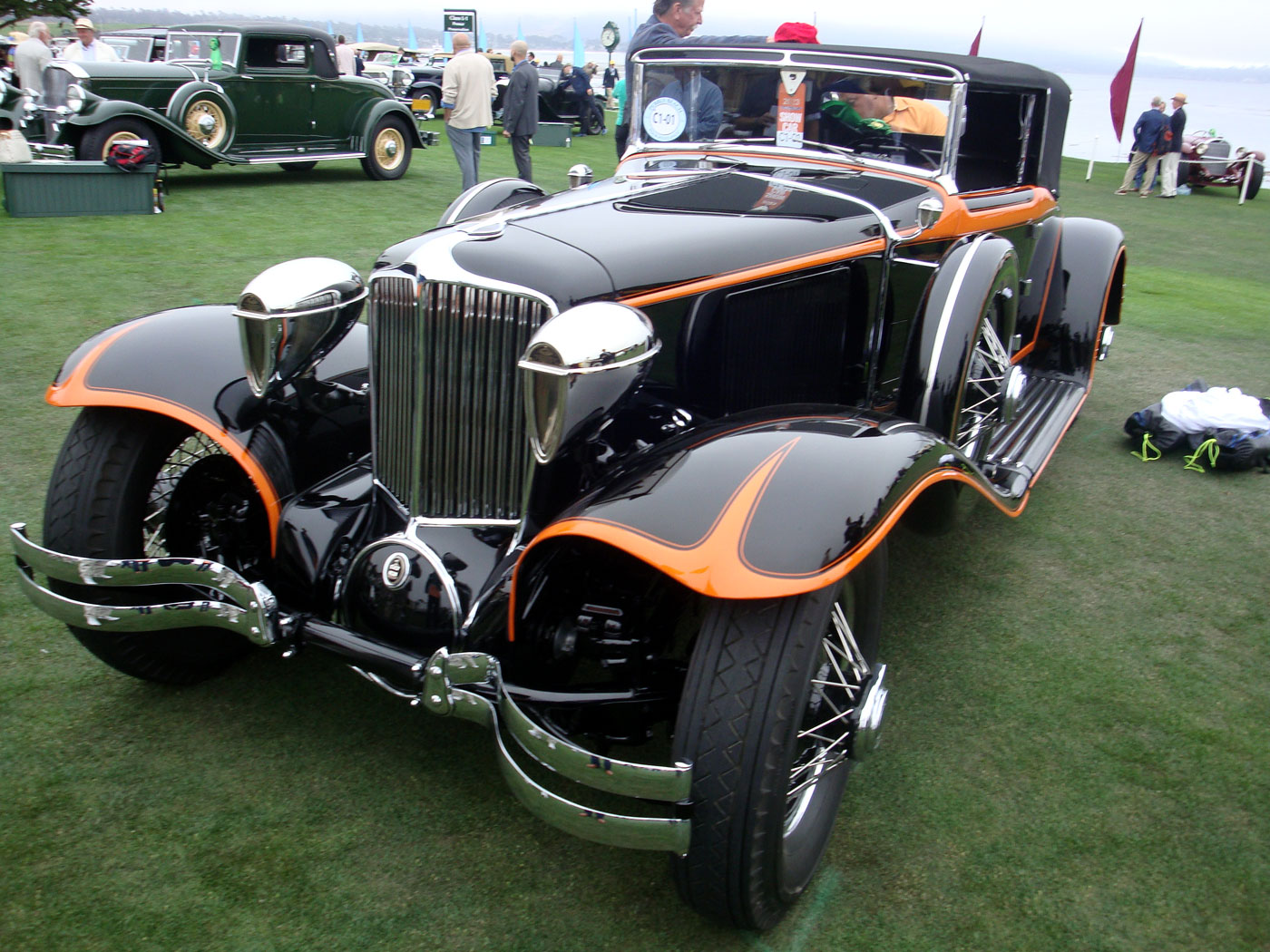
A spectacular 1929 Cord L-29 cabriolet, from Greg Ornazian, Troy, MI. Another of the greatest cars ever, in my opinion, with a striking color combination and accessory Woodlites for the driver to whom, “Looking really cool is more important than actually seeing the road to drive at night.”
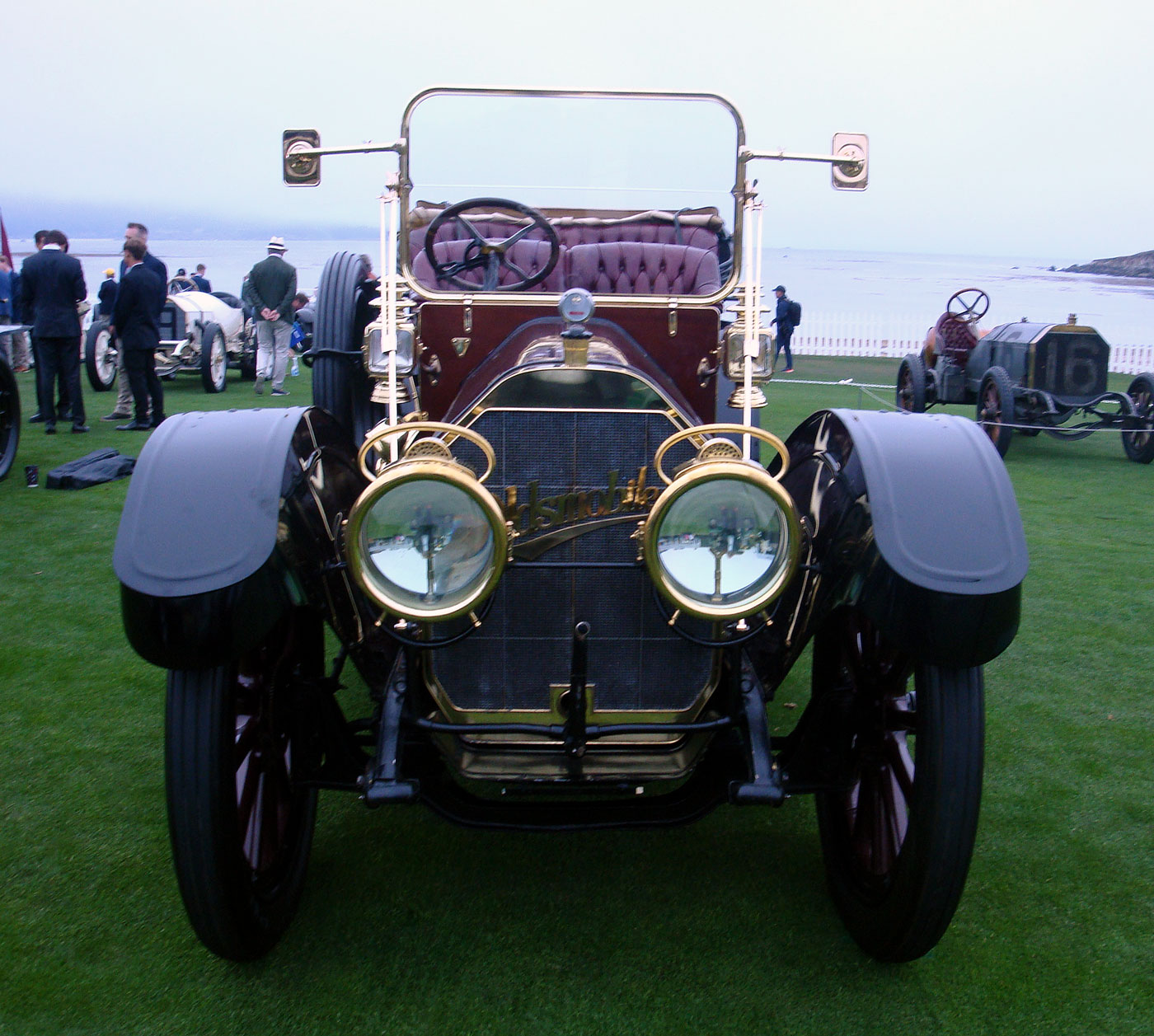
A huge 1911 Oldsmobile Limited Seven Passenger Touring, from Stan Lucas, Long Beach, CA. I believe this was the largest car of the period.
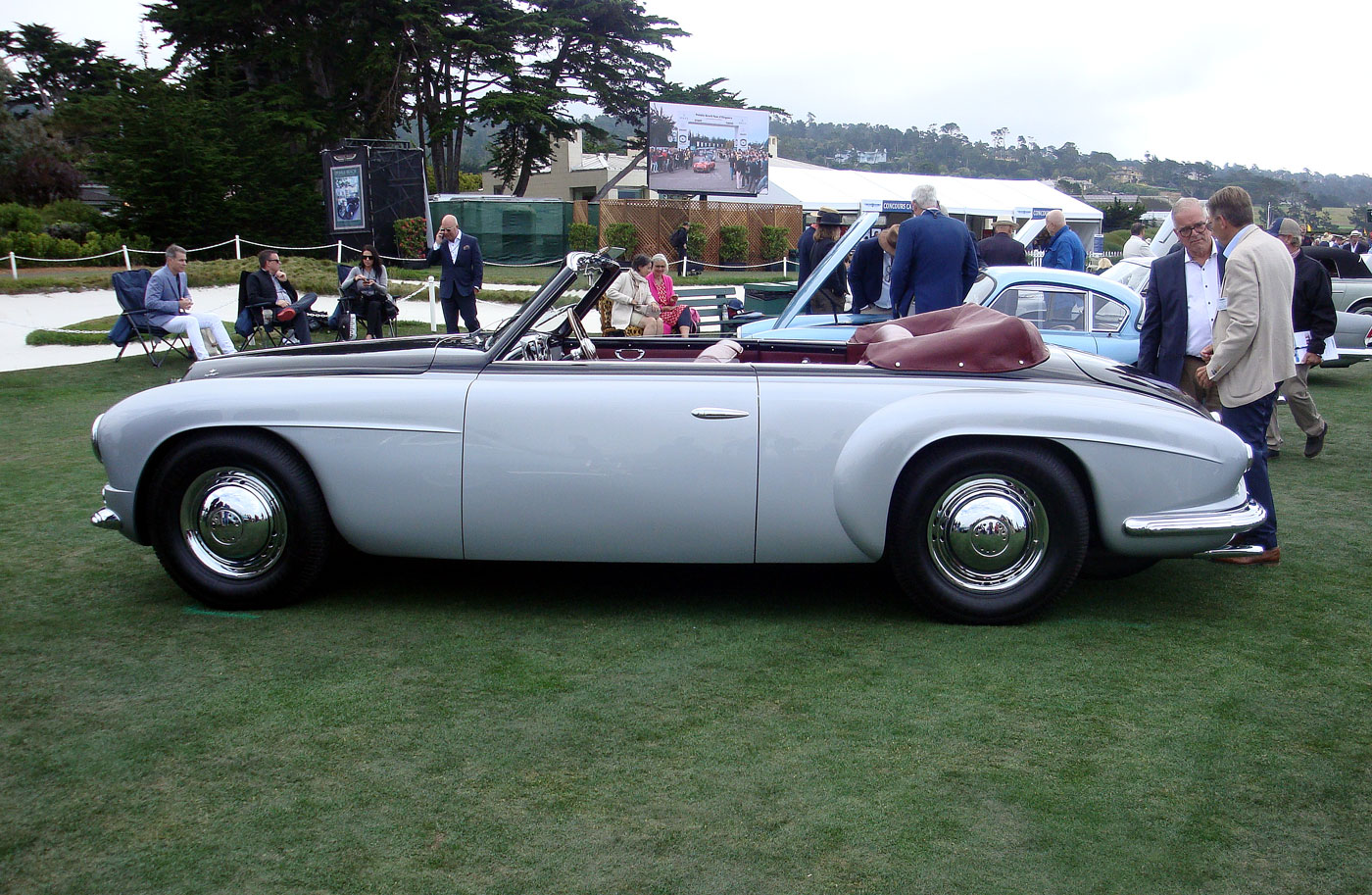
a 1952 Alfa Romeo 6C 2500 SS Touring Spider, from Matthias Metz, Rosengarten, Germany. This was a breathtaking car. Unfortunately, it had a small accident before the show and bashed in the upper grille. It was still magnificent.

Here is a 1953 Cadillac Ghia Coupe, from Lee and Julia Carr, Santa Barbara, CA. Quite a spectacular design in 1953 and just about perfect except for the white insert on the sides. After Ghia’s passing in 1944, ownership passed to Mario Boano, but he left the firm in 1953 to go to FIAT. Ownership passed then to Luigi Segre, who subsequently worked with perhaps the greatest Italian stylist of the period, Giovanni Savonuzzi. I suspect that Boano was behind the white insert. The green ribbon signifies that the car completed The Tour on Thursday.
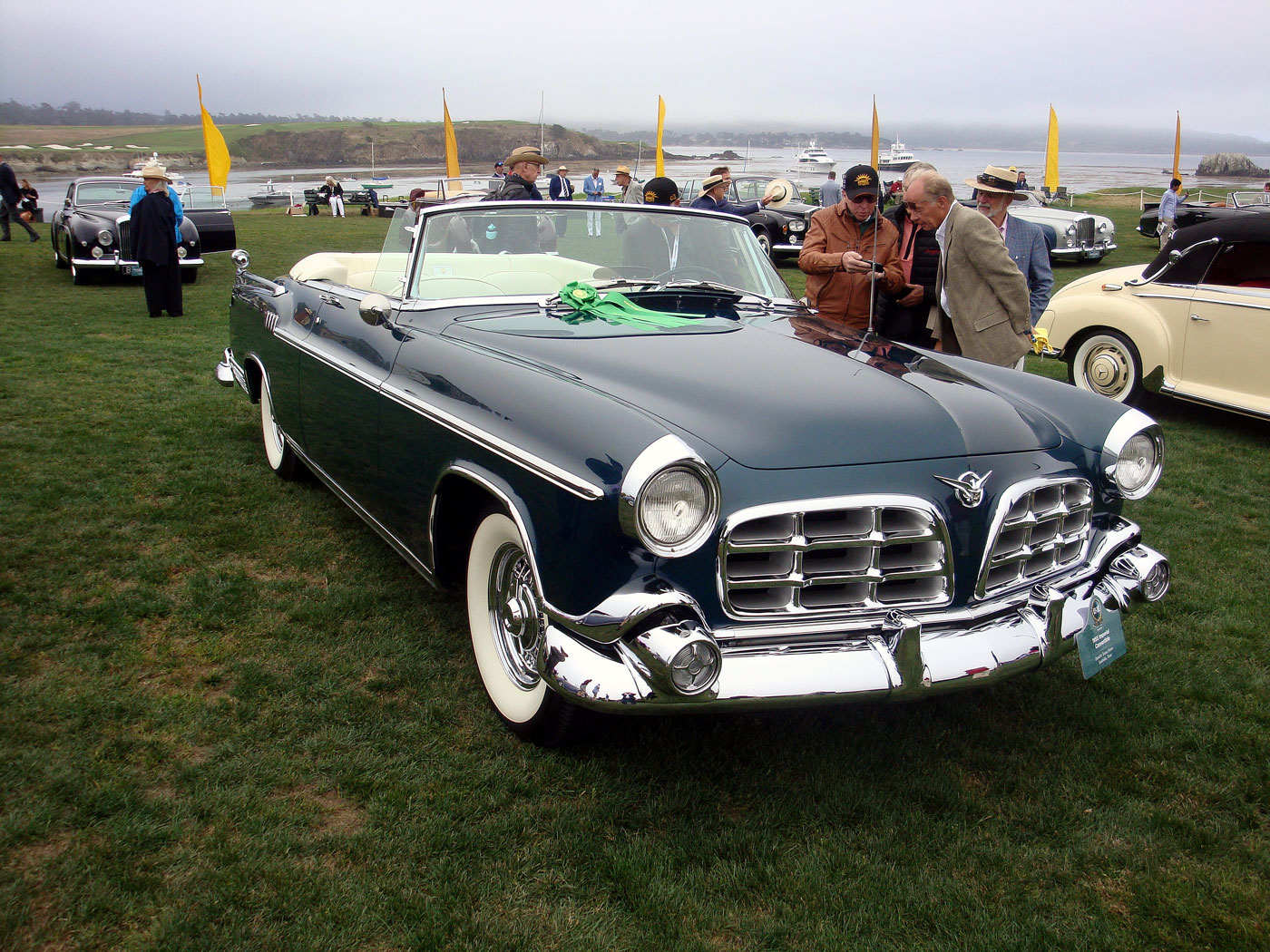
1955 Chrysler Imperial. What is this doing here? Well, it was built for K.T. Keller, the Chrysler CEO at that time, completely handbuilt, and one of a kind. Yes, there are three factory-built 1955 Imperial convertibles built for senior executives from a New Yorker convertible, which have been documented and to my knowledge are still unrestored. Keller’s car was a full custom, built regardless of cost. The factory fitted fuel injection in it at that time but it was not yet perfected and they re-converted it to carbs.
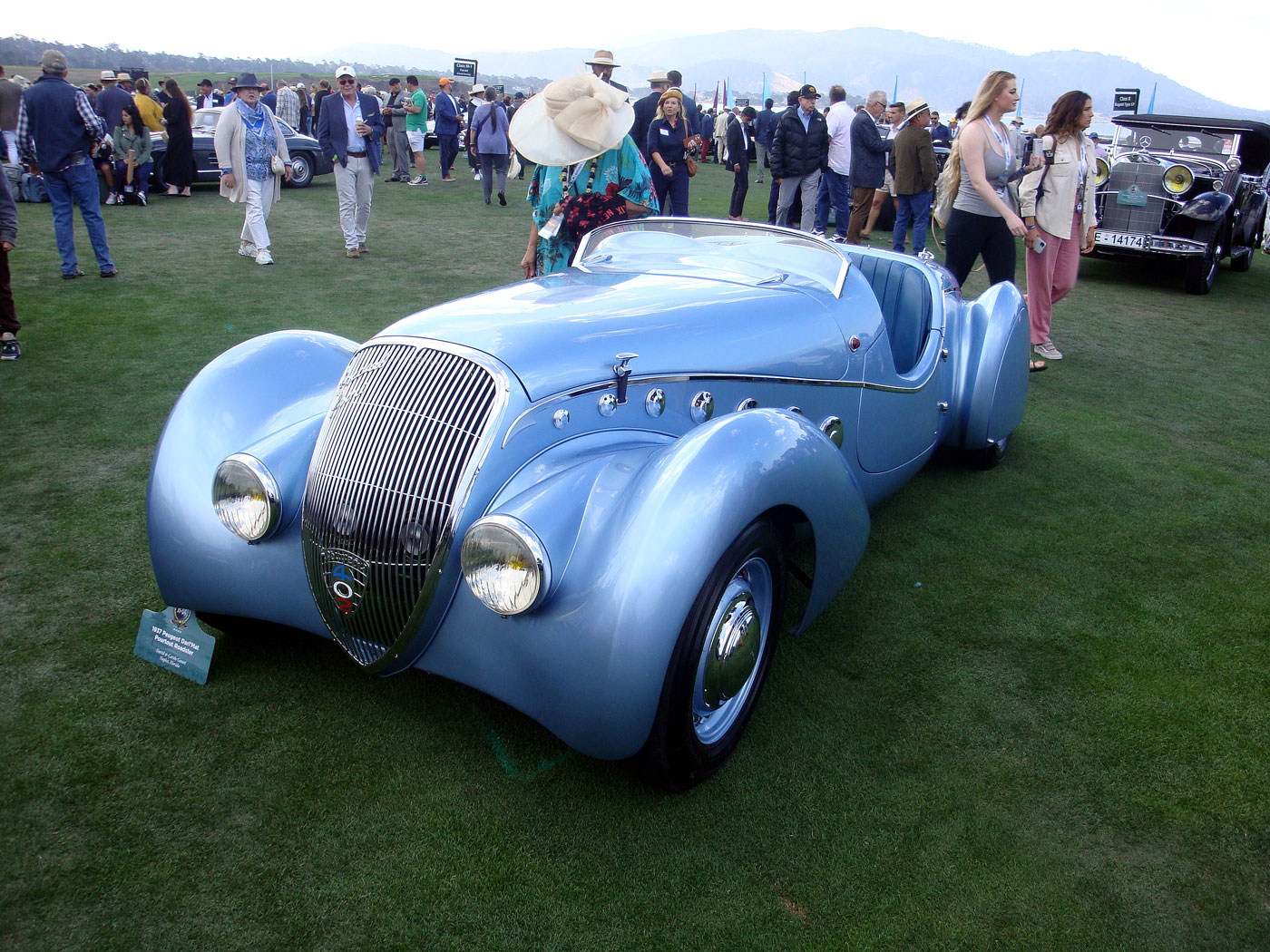
1937 Peugeot Darl’Mat Pourtout roadster, from David and Carol Gaunt, Naples, Florida. This would have been one of my top five contenders if I had such a thing. Darl’Mat was a Peugeot dealer in Paris. He worked with coachbuilder Pourtout and designer Georges Paulin to create this car, one of about 53 roadsters, 32 cabriolets, and 20 coupes. Paulin was one of the greatest designers in this period, but he was making a living as a dentist. In 1940 he joined the French Resistance to spy for the British, but he was captured and killed by the Germans.
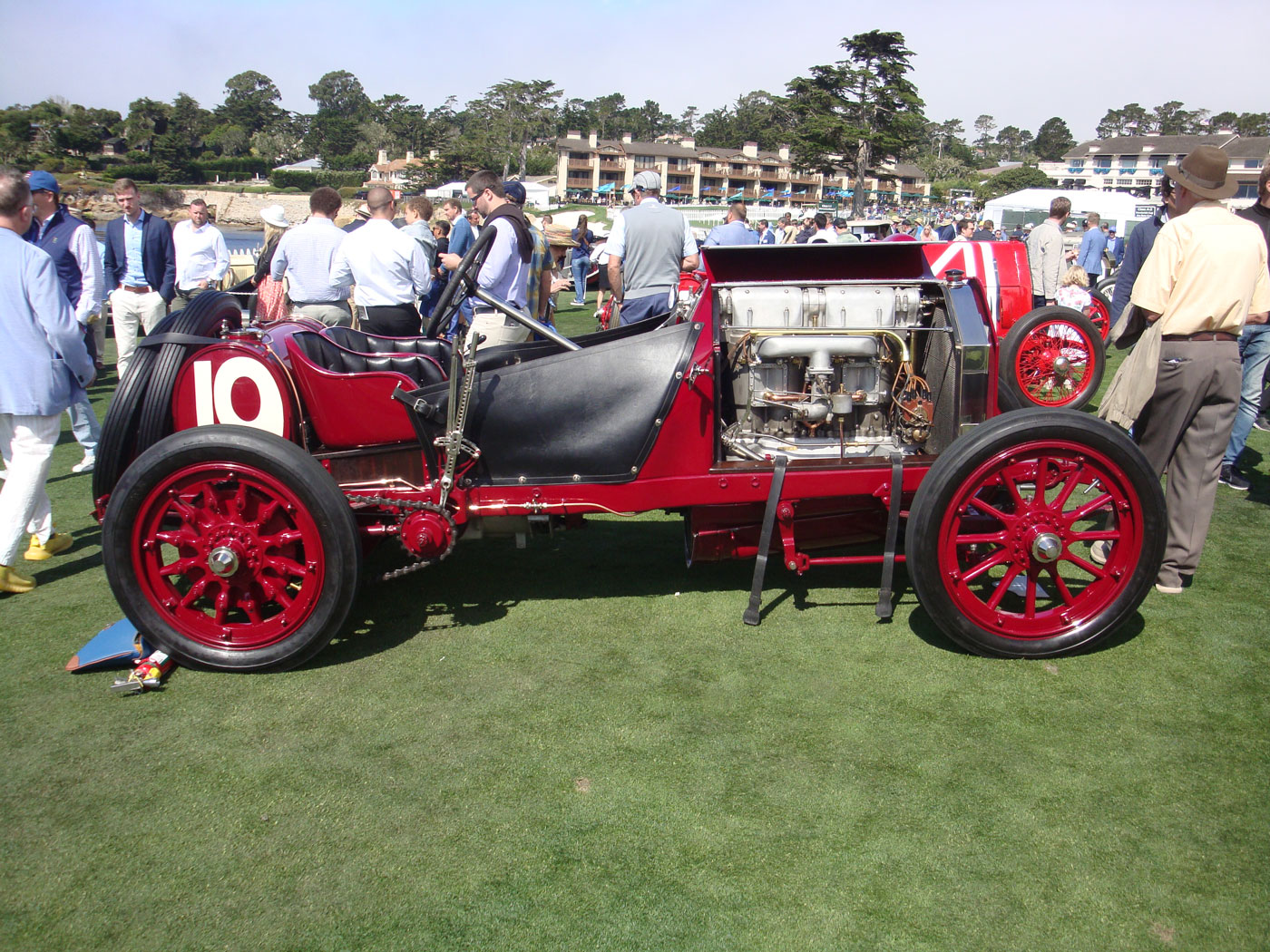
There were two FIAT race cars on display, a 1910 S61 Grand Pris, owned by William Evans, San Diego, CA and….
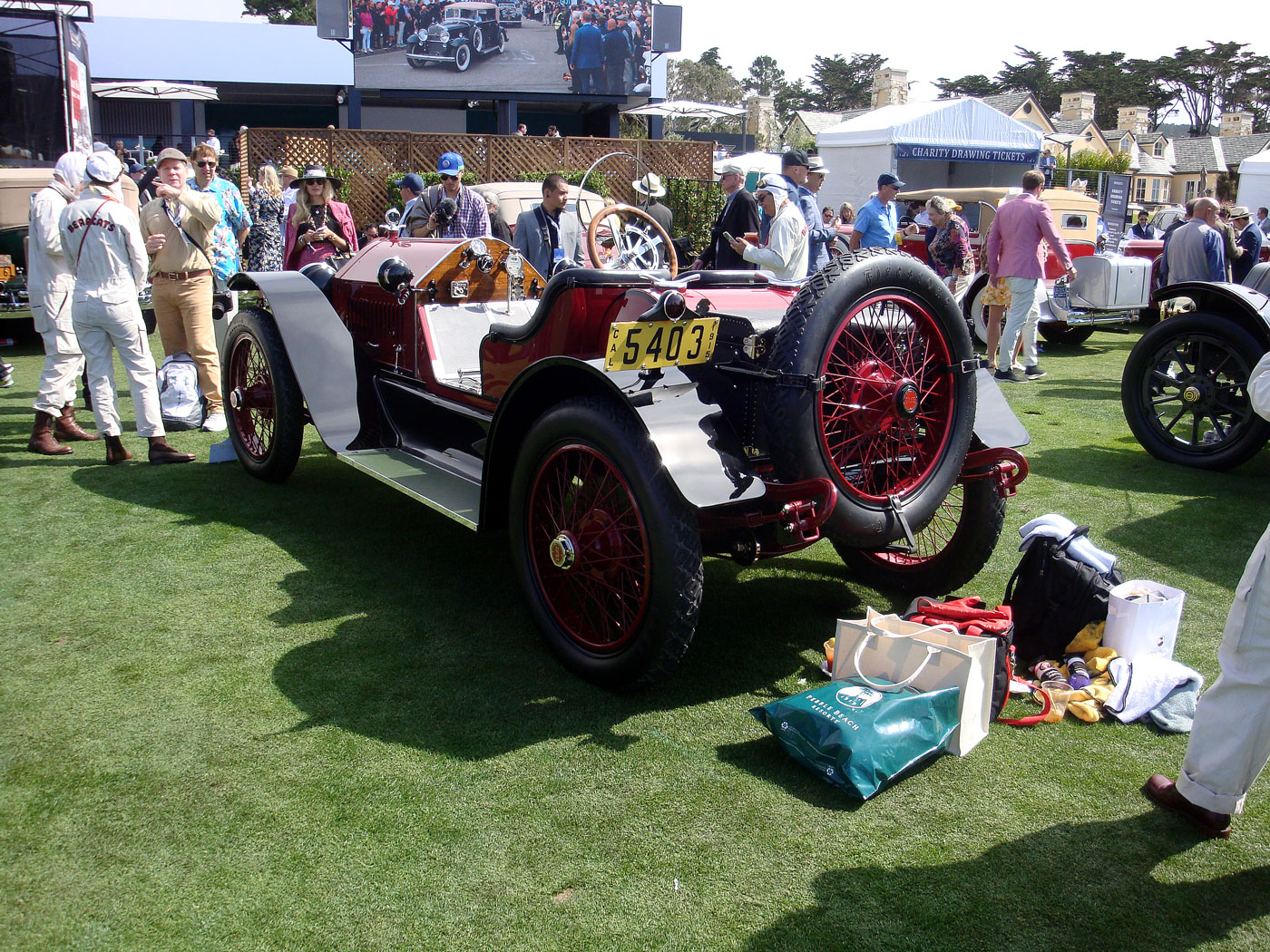
Yes, along with the Mercer, here is the quintessential American grand prix car of the period, a 1915 Stutz Model 4F Bearcat, owned by Allen Shay and Kirsten Hanson, Creston, CA. Fabulous. Breathtaking. What else can you say?
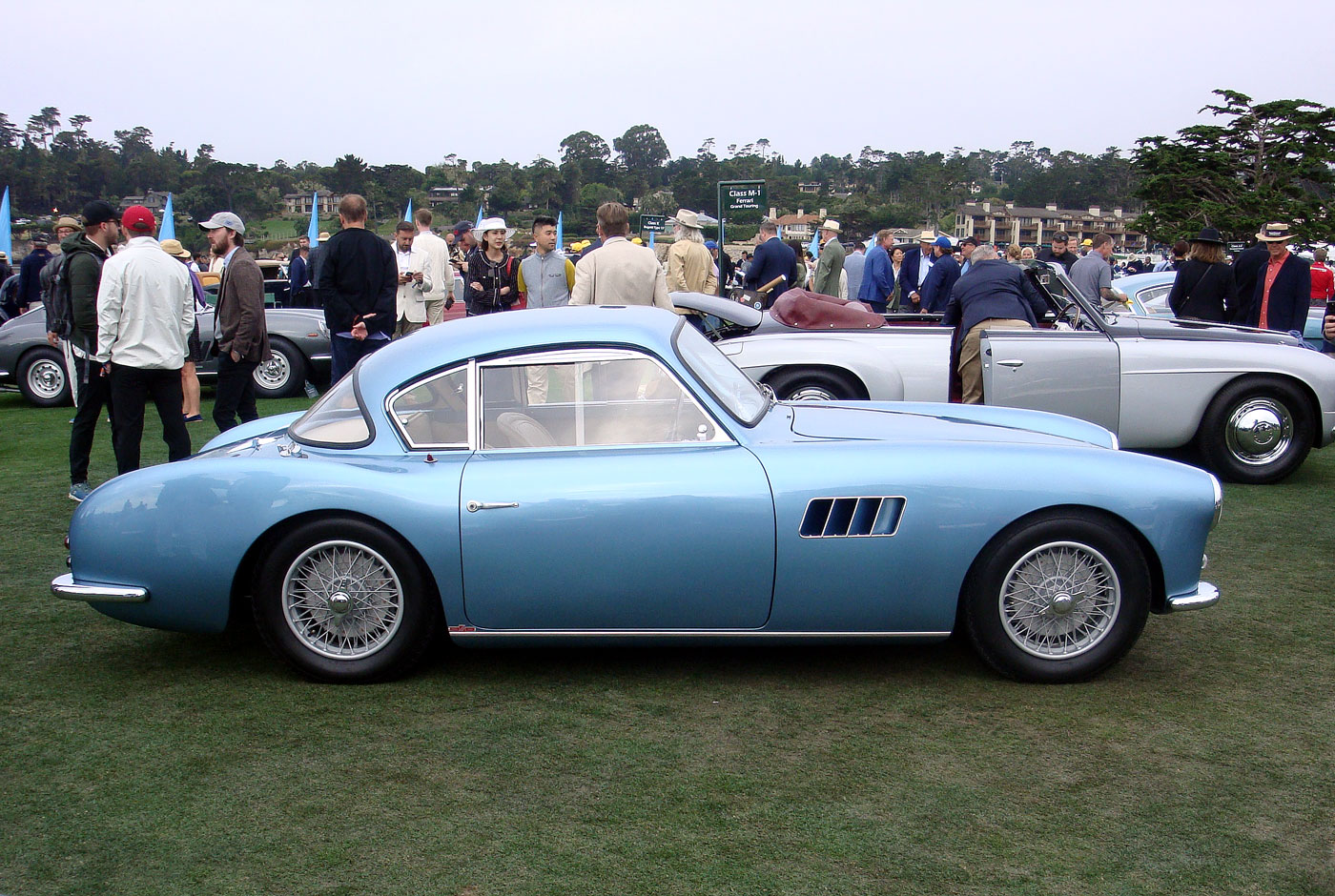
This is a 1956 Talbot-Lago T14 Lago Sport 2500 coupe, owned by Tedd and Christina Zamjahn, Hales Corners, WI. This would be the star at Retromobile. Very beautiful in a photo and even more so in person.
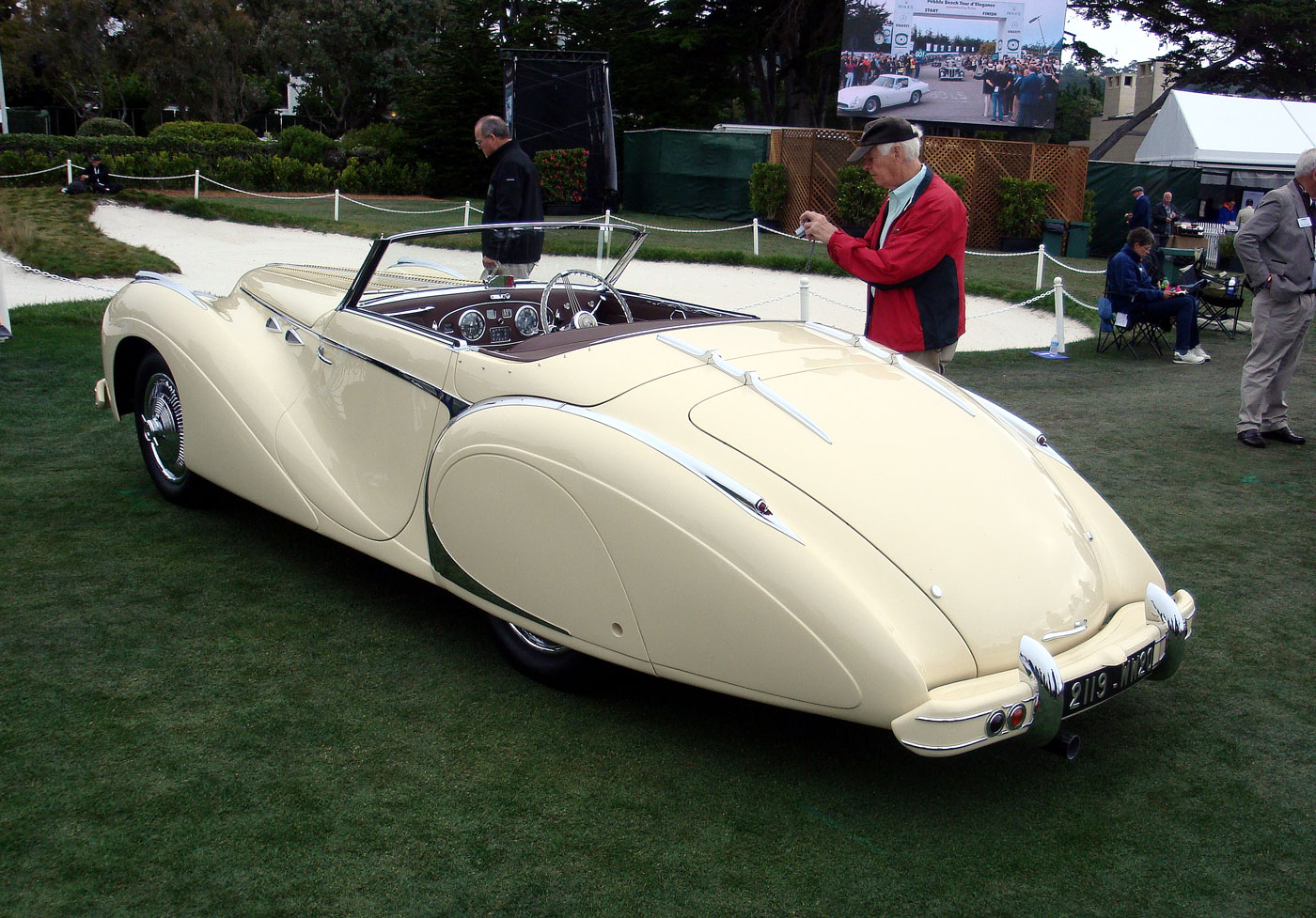
Here is a 1950 Talbot-Lago T26 GrandSport Saoutchik cabriolet, from Steve and Marilee Hamilton, Washoe Valley, NV. What a change from the T14 only 6 years later! Perfection.
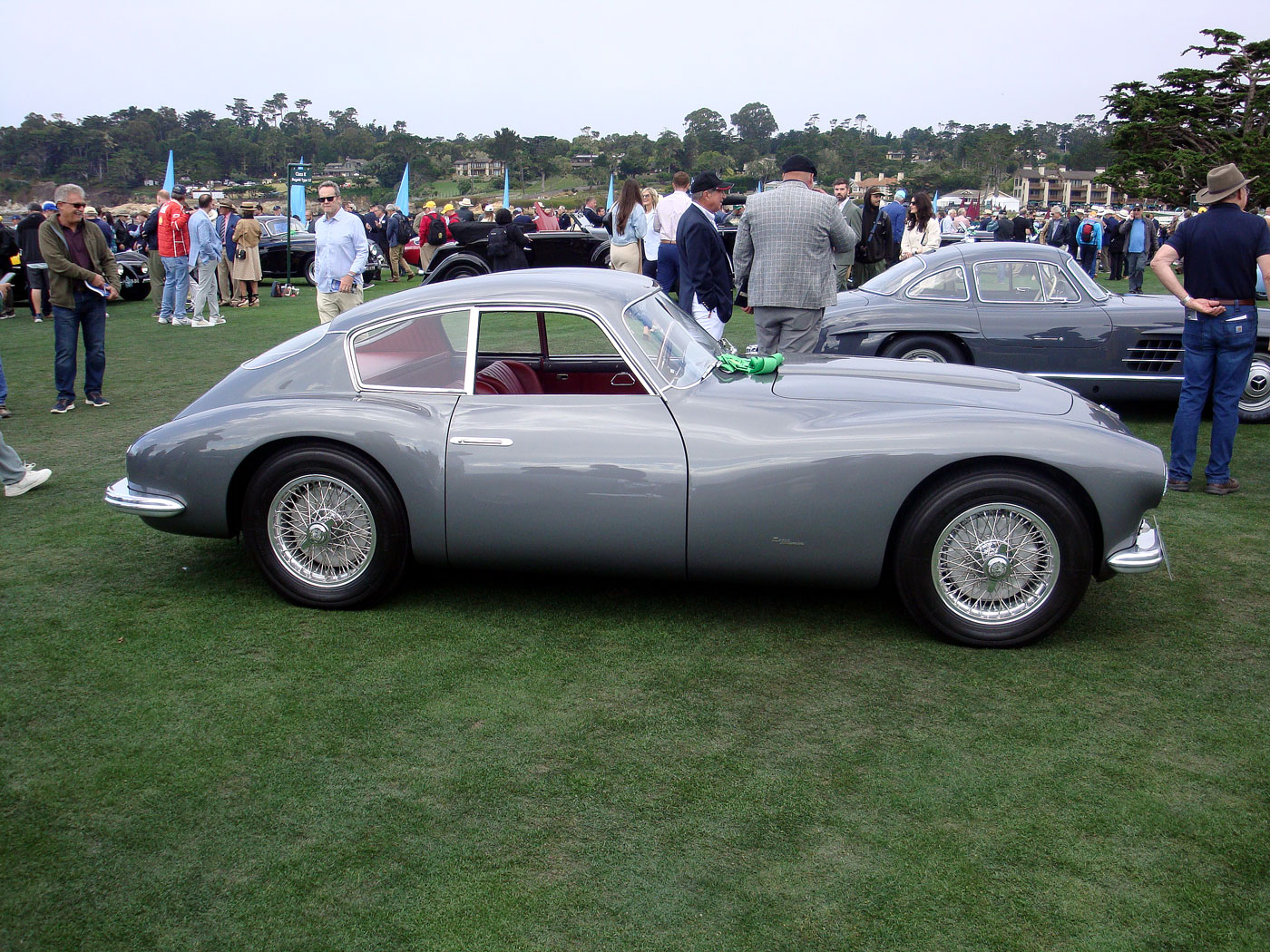
One of my favorites, a FIAT 8V. Zagato Berlinetta Elaborata, from Linda and Paul Gould, Pawling, NY. One of the greatest postwar cars, and a million-dollar car today. I was unfamiliar with the 8V until my friend, the last Chris Dickel, bought one with a Rapi body and we had to go to Tenconi in Italy to get the missing instrument cluster. That was a trip, but he got it. Only 114 cars were made before production stopped in 1954. Some cars were made with coachwork by Ghia, Vignale, and Zagato. The Siata 208 is similar. Another example of the sort of thing you would see here but not elsewhere.
And now, the answers to the two questions you are asking.
1. Which car won the “Most Elegant Car” award? This would be the red “Narwal” Delahaye convertible. I was told that this car looked very different going down the road on The Tour than sitting on the lawn, and this is what convinced the judges. I had never thought about this idea before, although I understand that there is one concours in Europe that only judges the car when it drives by the judges stand, so I think there must be really something to this idea. After all, they were built to drive, not sit still.
2. Which car was my favorite? Well, this will surprise everyone except my friends, but what I liked the most was the 1955 Imperial convertible. This is probably because I have collected Imperials for many years. If you were a Bugatti or Ferrari owner, you would naturally gravitate to what you have owned. Prior to the show, I did not know about this car. Unlike Ford and GM, Chrysler did not destroy their dream cars and fortunately most of them still exist.
Well, that’s a wrap for this year. The organizers are undoubtedly already working on the entry list for next year. I wonder what the featured classes will be?
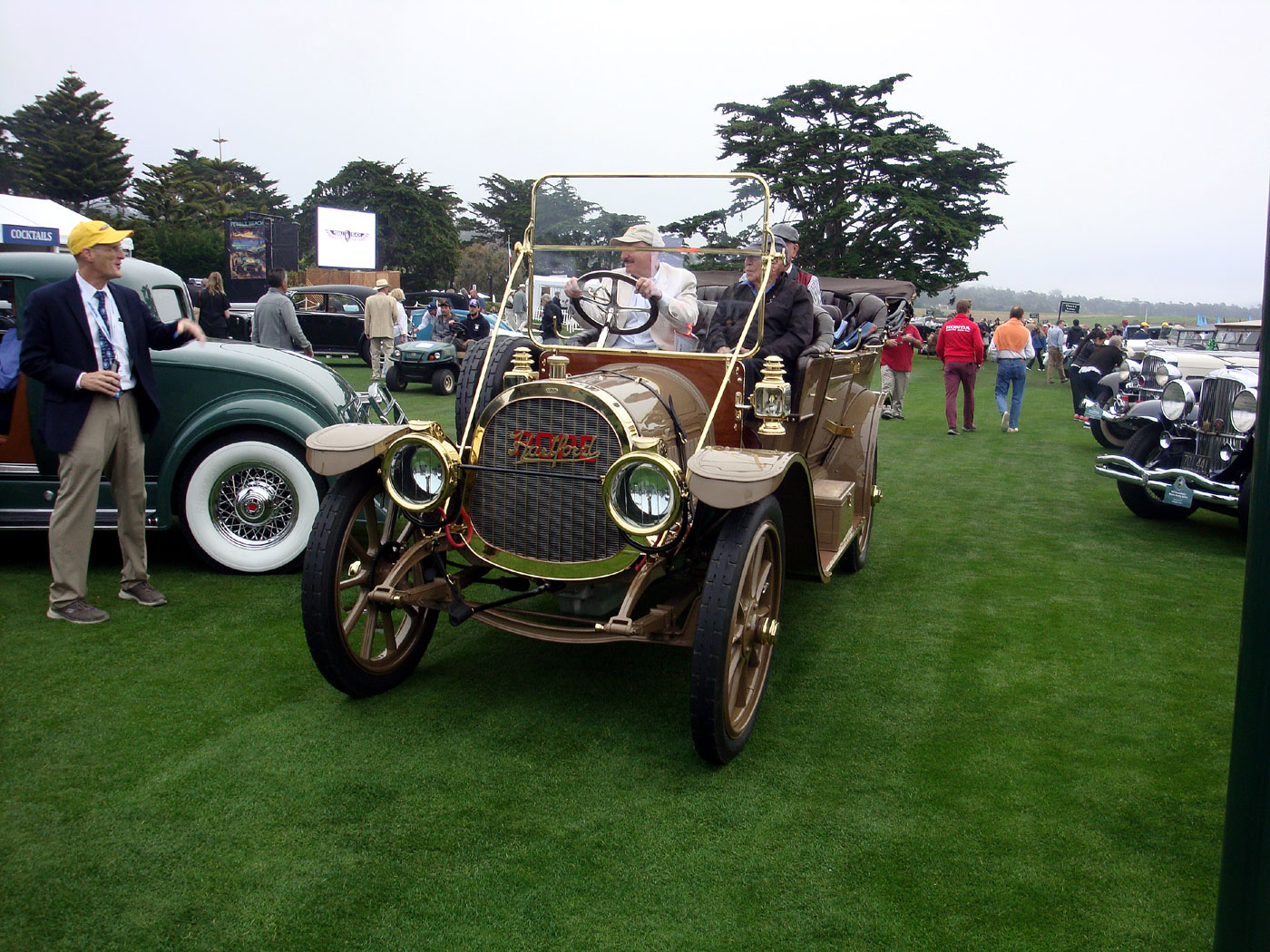
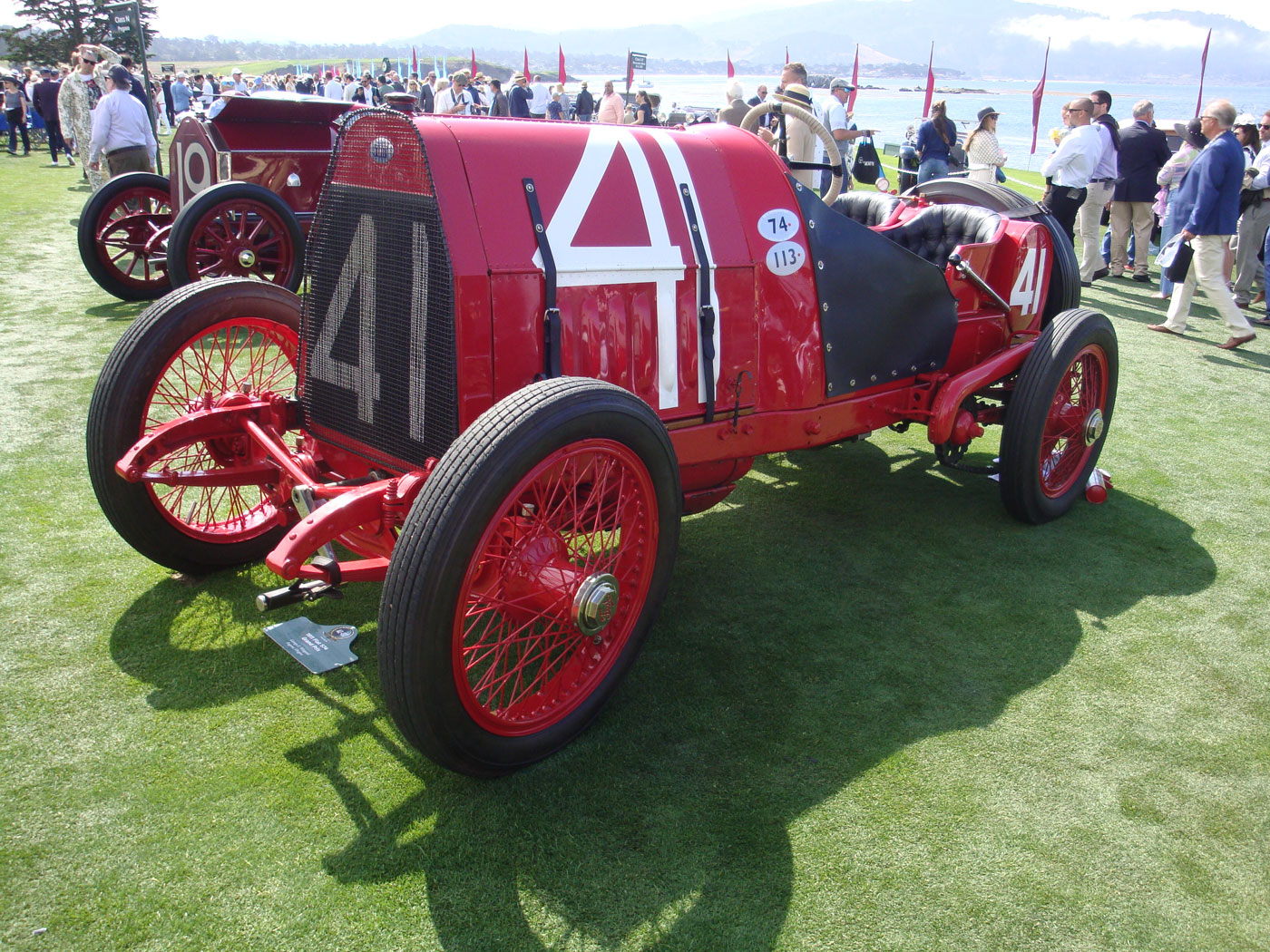

The recounting of Bentley’s Le Mans victories brings to mind Ettore Bugatti’s somewhat snarky remark that “Monsieur Bentley builds the fastest trucks in Europe.”
You doubtless noticed that the 1911 Oldsmobile is right hand drive. Last year I spent quite some time trying to identify a right hand drive car in a picture taken locally in 1906. It turned out to be a Packard. The US adopted travel on the right at some point in the 19th century. Standardizing on left hand drive did not happen until later in the 20th. I suspect that the arrival of the Model T Ford in 1908 might have had something to do with it.
Hey Brandy,
Wonderful images and story line! The intro from your down-under accomplice is epic. He has you figured out. Thank you so much for sharing. : )
Squirrel,
Jay
Brandes’ articles are most enjoyable. His descriptive style is entertaining, pleasant and educational, all at the same time!
I particularly like his photos with captions, long captions, informative captions.
He knows the subject matter, that’s for sure.
Give him a raise!!!
Hector Cademartori